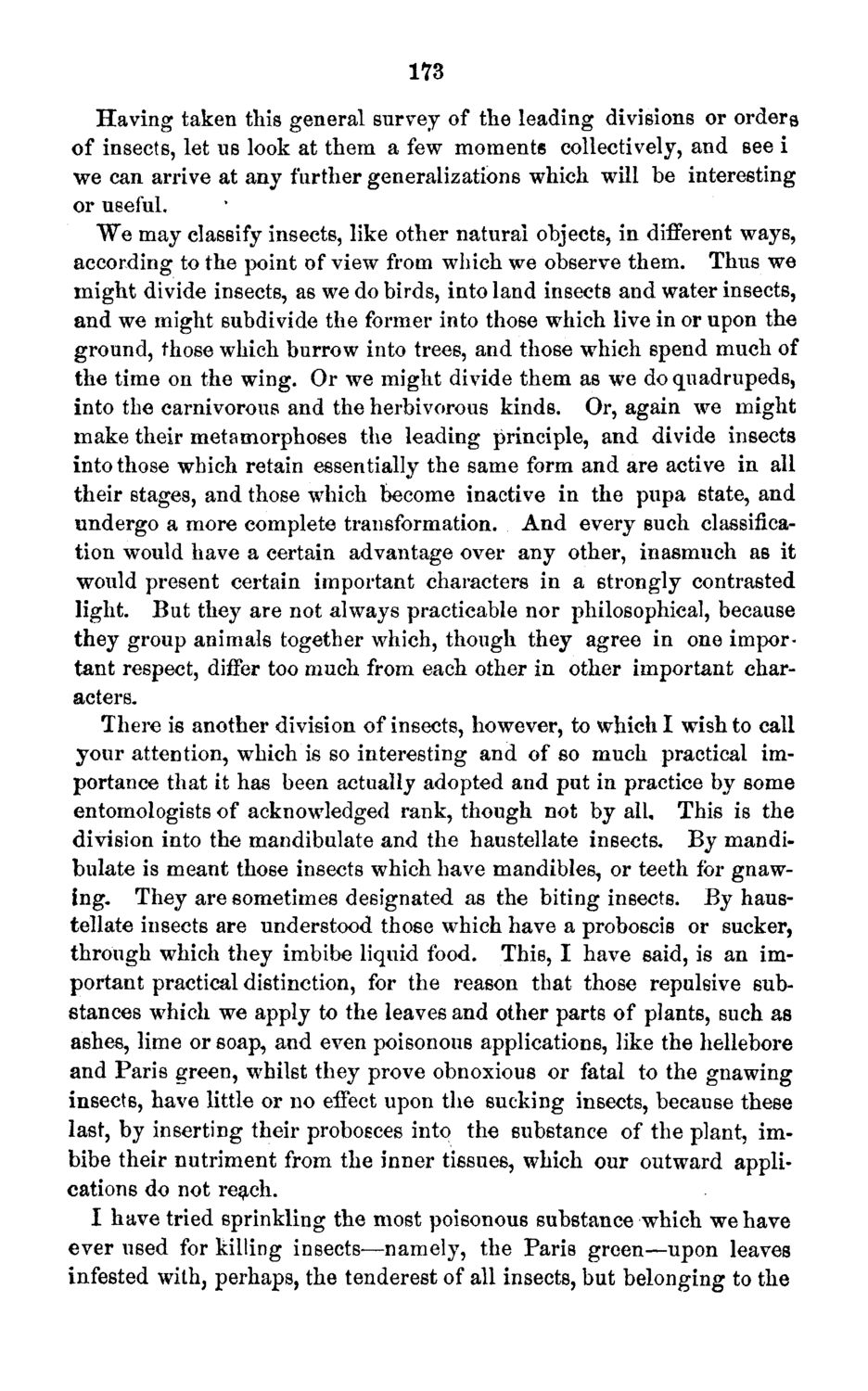| |
| |
Caption: Board of Trustees Minutes - 1871
This is a reduced-resolution page image for fast online browsing.

EXTRACTED TEXT FROM PAGE:
173 Having taken this general survey of the leading divisions or orders of insects, let us look at them a few moments collectively, and see i we can arrive at any further generalizations which will be interesting or useful. "We may classify insects, like other natural objects, in different ways, according to the point of view from which we observe them. Thus we might divide insects, as we do birds, into land insects and water insects, and we might subdivide the former into those which live in or upon the ground, those which burrow into trees, and those which spend much of the time on the wing. Or we might divide them as we do quadrupeds, into the carnivorous and the herbivorous kinds. Or, again we might make their metamorphoses the leading principle, and divide insects into those which retain essentially the same form and are active in all their stages, and those which become inactive in the pupa state, and undergo a more complete transformation. And every such classification would have a certain advantage over any other, inasmuch as it would present certain important characters in a strongly contrasted light. But they are not always practicable nor philosophical, because they group animals together which, though they agree in one important respect, differ too much from each other in other important characters. There is another division of insects, however, to which I wish to call your attention, which is so interesting and of so much practical importance that it has been actually adopted and put in practice by some entomologists of acknowledged rank, though not by all. This is the division into the mandibulate and the haustellate insects. By mandibulate is meant those insects which have mandibles, or teeth for gnawing* They are sometimes designated as the biting insects. By haustellate insects are understood those which have a proboscis or sucker, through which they imbibe liquid food. This, I have said, is an important practical distinction, for the reason that those repulsive substances which we apply to the leaves and other parts of plants, such as ashes, lime or soap, and even poisonous applications, like the hellebore and Paris green, whilst they prove obnoxious or fatal to the gnawing insects, have little or no effect upon the sucking insects, because these last, by inserting their probosces into the substance of the plant, imbibe their nutriment from the inner tissues, which our outward applications do not re$ch. I have tried sprinkling the most poisonous substance which we have ever used for killing insects—namely, the Paris green—upon leaves infested with, perhaps, the tenderest of all insects, but belonging to the
| |